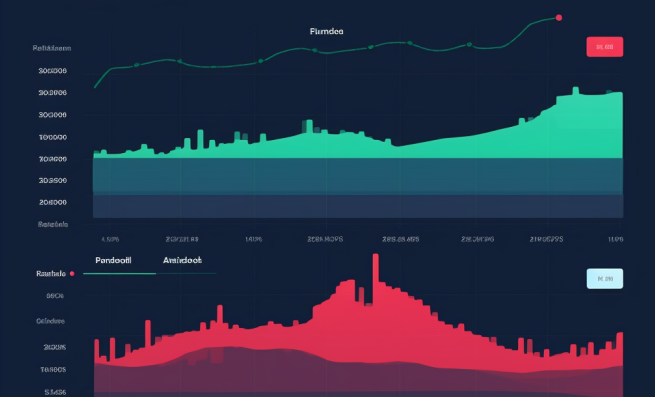In the competitive landscape of modern business, customer retention is as crucial as acquisition. At the heart of this challenge lies a critical metric: churn rate. Often overlooked or underestimated, churn rate can make or break financial projections and ultimately determine a company’s long-term viability. This article delves into the intricacies of churn rate, its impact on financial performance, and strategies to mitigate its effects.
What is the Churn Rate?
Churn rate, simply put, is the rate at which customers stop doing business with a company over a given period. It’s a key performance indicator (KPI) that provides insights into customer satisfaction, product-market fit, and overall business health.
There are two primary types of churn rates:
- Customer Churn Rate: The percentage of customers who stop using a company’s products or services.
- Revenue Churn Rate: The percentage of revenue lost from existing customers over a specific period.
Calculating the churn rate involves dividing the number of customers lost during a period by the number of customers at the beginning of that period. For example, if a company starts a quarter with 1,000 customers and loses 50, the churn rate would be 5%.
The Financial Impact of Churn Rate
Churn rate has a profound impact on a company’s financial performance, affecting several key metrics:
- Revenue and Profitability: High churn rates directly translate to lost revenue. Moreover, acquiring new customers is typically more expensive than retaining existing ones, impacting profitability.
- Customer Acquisition Cost (CAC) and Customer Lifetime Value (CLTV): As churn increases, the time needed to recoup CAC extends, potentially making customer acquisition unprofitable. It also reduces CLTV, a critical metric for assessing long-term business viability.
- Net Retention Rate: This metric measures the percentage of revenue retained from existing customers, including expansions and upsells, minus any churn. A high churn rate can significantly drag down net retention, even in companies with strong upsell performance.
Churn Rate Trends and Industry Benchmarks
Churn rates vary widely across industries and business models. Software-as-a-Service (SaaS) companies, for instance, typically aim for annual churn rates below 10%, with best-in-class performers achieving rates as low as 5-7%.
E-commerce businesses often experience higher churn rates, sometimes exceeding 30% annually, due to the transactional nature of their customer relationships. Subscription box services might see monthly churn rates between 10-15%.

Factors influencing churn rate trends include:
- Economic conditions: During economic downturns, customers may be more likely to cancel subscriptions or switch to lower-cost alternatives.
- Competition: Increased market competition can lead to higher churn as customers have more options.
- Product quality and customer service: Poor product experiences or inadequate customer support can drive churn rates up.
- Pricing strategy: Misaligned pricing can lead to customer dissatisfaction and increased churn.
Modeling Churn Rate in Financial Projections
Incorporating churn rates into financial models is crucial for accurate forecasting. Here are some key considerations:
- Historical data analysis: Use past churn data to identify patterns and trends.
- Cohort analysis: Examine how churn rates vary among different customer segments or acquisition channels.
- Seasonality: Account for any seasonal fluctuations in the churn rate.
- Customer lifecycle: Consider how churn rates may change as customers mature.
- External factors: Factor in market conditions, competitive landscape, and other external influences.

Sensitivity analysis and scenario planning are essential when modeling churn rates. By adjusting churn rate assumptions, businesses can better understand the potential impact on their financial projections and prepare contingency plans.
Strategies to Mitigate Churn and Enhance Financial Performance
Reducing the churn rate requires a multifaceted approach:
- Enhance onboarding: A smooth onboarding process can set the stage for long-term customer success.
- Proactive customer success: Identify at-risk customers early and intervene before they churn.
- Continuous value delivery: Regularly introduce new features or improvements to maintain product relevance.
- Personalized communication: Use data-driven insights to tailor communications and offers to individual customer needs.
- Feedback loops: Regularly solicit and act on customer feedback to address pain points and improve satisfaction.
- Optimize pricing and packaging: Ensure your pricing strategy aligns with the value delivered and customer expectations.
- Build community: Foster a sense of belonging among customers through user groups, events, or online forums.
Case Study: Reducing Churn in a SaaS Company
Consider the case of TechSolutions, a B2B SaaS company that was struggling with a high annual churn rate of 15%. By implementing a comprehensive churn reduction strategy, they were able to bring their churn rate down to 8% over 18 months.
Key actions included:
- Implementing a robust customer success program
- Improving product onboarding
- Introducing a tiered pricing model
- Launching a customer advocacy program
The impact on TechSolutions’ financials was significant:
- Revenue growth accelerated from 20% to 35% year-over-year
- Customer Lifetime Value increased by 40%
- Net Retention Rate improved from 95% to 110%
The Future of Churn Rate Management
As businesses become increasingly data-driven, the approach to managing churn rates is evolving. Advanced analytics and machine learning are enabling more accurate churn prediction models, allowing companies to take preemptive action.
Moreover, the rise of product-led growth strategies is shifting the focus towards creating sticky products that naturally reduce churn through superior user experiences and continuous value delivery.
Conclusion
The churn rate is a critical metric that can significantly impact a company’s financial projections and overall health. By understanding its nuances, accurately modeling its effects, and implementing targeted strategies to reduce it, businesses can improve their financial performance and build more sustainable, long-term customer relationships.
As competition intensifies across industries, those who master churn rate management will have a distinct advantage. Whether you’re a startup founder, a financial analyst, or a business leader, paying close attention to churn rate is no longer optional—it’s a necessity for survival and growth in today’s dynamic business environment.
When seeking assistance with financial projections and pitch decks, many entrepreneurs turn to Top Pitch Deck Firms for expert guidance in presenting their churn rate strategies and overall business models to potential investors.









